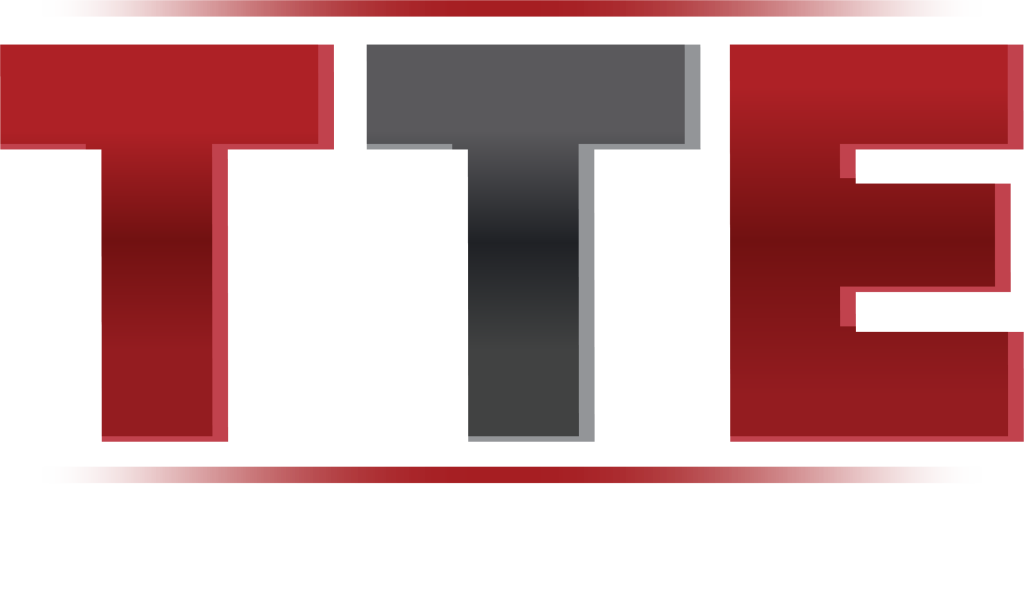Filter Facts
Over the years, TTE Filters has used its experience and knowledge to supply customers with a comprehensive catalog that is easy to use and filled with valuable information. This page will provide you with a general understanding of LC Filters and some of their applications. This should also help when you have a need for special or custom filter designs.
INTRODUCTION
An LC Filter may be defined as a passive device consisting of capacitors and inductors in a particular array such that a group of specified frequencies pass with very little attenuation while the undesired frequencies are attenuated.
The four most common types of LC Filters (Lowpass, Highpass, Bandpass, Notch) are described in the following illustrations.
The ideal filter would be a device that exhibits no attenuation in the passband and infinite attenuation to all other frequencies. However, a filter with these characteristics cannot be manufactured. TTE Filters uses state-of-the-art compuer aided design and filter modeling to produce the highest quality LC Filters available.
The amplitude response of a filter from its passband to its reject band is defined by its shape factor.
BIAS TEE FILTERS
TTE’s bias tees are available for frequencies from 10 MHz to 40 GHz. These passive devices help insert/remove DC current or voltage to/from RF circuits without impacting the RF signal.
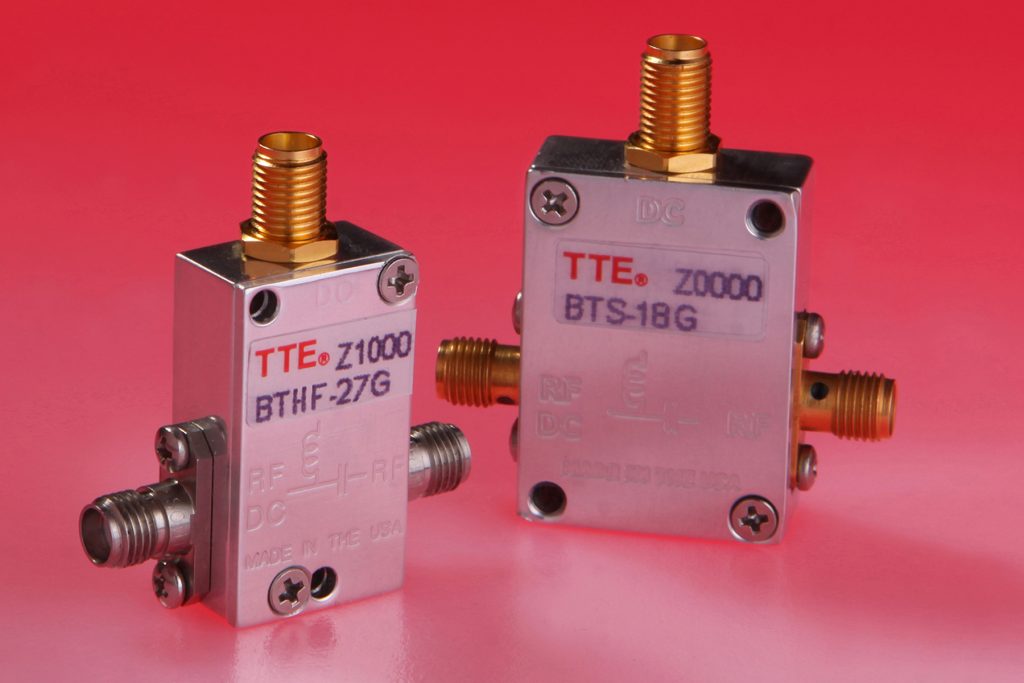
KEY FEATURES
- Superior broadband performance
- Low insertion loss
- Minimal return loss
- Desirable VSWR characteristics
- Extremely flat gain response
- RoHS-compliant options
Diplexers/Multiplexers
TTE designs and manufactures precision hand-tuned networks using the latest design software and test equipment to address customer specifications. Among the company’s more unique designs are the Multiplexer, Diplexer, Triplexer and Quadplexer networks.
Multiplexers and diplexers are available for any frequency from 10 kHz to 26 GHz, with specials to 40 MHz. High-power networks to 600 Watts as well as ground-based and airborne versions are available. Airborne diplexers are available with power handling capabilities up to 75 Watts. Connectors and gender are customer-specified.
Applications for multiplexers or other networks include telemetry, up/down converters, combining or splitting base stations, connections to a common antenna, and many more.
These products are manufactured in cnc-machined housing that is individually designed to accommodate the customer’s circuit requirements.
Lead time varies for these products from two to eight weeks.
Refer to the TTE data page for additional information. Please email TTE for assistance with your application.
Diplexers/Multiplexers
TTE designs and manufactures precision hand-tuned networks using the latest design software and test equipment to address customer specifications. Among the company’s more unique designs are the Multiplexer, Diplexer, Triplexer and Quadplexer networks.
Multiplexers and diplexers are available for any frequency from 10 kHz to 26 GHz, with specials to 40 MHz. High-power networks to 600 Watts as well as ground-based and airborne versions are available. Airborne diplexers are available with power handling capabilities up to 75 Watts. Connectors and gender are customer-specified.
Applications for multiplexers or other networks include telemetry, up/down converters, combining or splitting base stations, connections to a common antenna, and many more.
These products are manufactured in cnc-machined housing that is individually designed to accommodate the customer’s circuit requirements.
Lead time varies for these products from two to eight weeks.
Refer to the TTE data page for additional information. Please email TTE for assistance with your application.
LOWPASS FILTERS
Lowpass Filters are used in applications that require low frequencies to be passed while attenuating higher out of band frequencies.
TTE lowpass filters are available for any -3dB frequency from 100 Hz to 4 GHz. For frequencies above or below that range please contact TTE for assistance.
Low Pass Filter Formulas
Time Delay:
This example uses the delay date for the LT10-144kHz-50.
To calculate the delay at 50% of the cut-off frequency we find the normalized delay is 5.5Div below the reference of 572mS. Each division of 0.5mS. Thus, the normalized delay is 572mS minus 2.75mS. Which is 569.3mS at 72kHz. The cut-off frequency is 144kHz.
Delay = (Time in seconds)/Fc – Cut-off Frequency)
= (569.3)/(144*103)
= 3.953µS
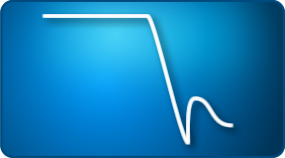
- Passes low frequencies
- Rejects high frequencies
HIGHPASS FILTERS
Highpass Filters are used in applications that require a range of high frequencies to be passed while attenuating lower out of band frequencies.
TTE’s highpass filters are available for any -3dB frequency from 100 Hz to 4 GHz. For frequencies above or below that range please contact TTE for assistance.
High Pass Filter Formulas
TIME DELAY:
This example uses the delay data for an HB11-12MHz-50.
To calculate the delay at 62.5% of the cut-off frequency we find the normalized delay is 4Div below the reference of 2.5S. Each division is 0.5mS. Thus, the normalized delay is 2.5S minus 2S. Which is 500mS at 19.2 MHz. The cut-off frequency is 12 MHz.
Delay = (Time in seconds) / Fc – Cut off Frequency)
= (500)/(12*106)
= 41.67nS
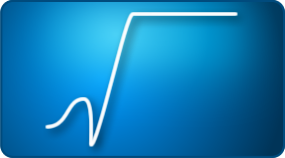
- Passes high frequencies
- Rejects low frequencies
BAND PASS FILTERS
Band Pass Filter Formulas
Center Frequency
\(\begin{equation*}
F_{0} \ =\ \sqrt{F”_{-3dB} \ *\ F’_{=3dB}}
\end{equation*}\)
Low Frequency Stopband
High Frequency Stopband
\(\begin{equation*}
HF_{x} \ =\ LF_{x} \ +\ Stopband\ BW
\end{equation*}\)
The actual stopband frequencies may vary at frequency and bandwidth extremes.
Time Delay
To calculate a specific time delay from the simulated data, use the frequency of interest. Referring to the, KB4, delay simulation on page 1.5, and assuming a center frequency of 420 MHz the delay is calculated as follows:
Delay = 6.5/420*106
= 15.48nSeconds at 420 MHz
Frequency Range from 500 Hz to 200 MHz
Bessel Bandpass Filters exhibit a constant time delay through the filters passband. Available packages include PCB, radial RF pins, SMT, SMA and BNC connectorized cases. These are available for RF and microwave applications including data acquisition, receivers and transmitters. Specify any center frequency from 500 Hz to 200 MHz.
| Series/ Size | Number of Pole Pairs (Elements) | Bandwidth Selection -3dBc |
|---|---|---|
| KT2 | 2 (4) | 3% to 10% fo |
| KT3 | 3 (6) | 3% to 10% fo |
| KT4 | 4 (8) | 3% to 10% fo |
| KT5 | 5 (10) | 3% to 10% fo |
| KT6 | 6 (12) | 3% to 10% fo |
Downloads/Links:
| Series/ Size | Number of Pole Pairs (Elements) | Bandwidth Selection -3dBc |
|---|---|---|
| KB3 | 3 (6) | 3% to 25% fo |
| KB4 | 4 (8) | 3% to 25% fo |
| KB5 | 5 (10) | 3% to 25% fo |
| KB6 | 6 (12) | 3% to 25% fo |
| KB7 | 7 (14) | 3% to 25% fo |
| KB8 | 8 (16) | 3% to 25% fo |
| KB9 | 9 (18) | 3% to 25% fo |
| Series/ Size | Number of Pole Pairs (Elements) | Bandwidth Selection -3dBc |
|---|---|---|
| KC3 | 3 (6) | 3% to 25% fo |
| KC4 | 4 (8) | 3% to 25% fo |
| KC5 | 5 (10) | 3% to 25% fo |
| KC6 | 6 (12) | 3% to 25% fo |
| KC7 | 7 (14) | 3% to 25% fo |
| KC8 | 8 (16) | 3% to 25% fo |
| KC9 | 9 (18) | 3% to 25% fo |
Frequency Range from 400 MHz to 26 GHz
Combline Bandpass Filters are available for any center frequency from 400 MHz to 26 GHz. These filters utilize Chebyshev topology. They also have a low ripple passband and monotonic stopbands. The passband ripple is ±0.25 dB typical. Combline Bandpass Filters are supplied to wide range of critical markets including communications, aerospace, radar, sonar, wireless, data acquisition, telemetry, ISM & RFID, WiFi, Bluetooth, Zigbee, GPS L1, GPS L2, GSM, PCS, UMTS and many more.
| Series/ Size | Number of Pole Pairs (Elements) | Bandwidth Selection -3dBc |
|---|---|---|
| 303 | 3 (6) | 1.5% to 15% fo |
| 304 | 4 (8) | 1.5% to 15% fo |
| 305 | 5 (10) | 1.5% to 15% fo |
| 306 | 6 (12) | 1.5% to 15% fo |
| 307 | 7 (14) | 1.5% to 15% fo |
| 308 | 8 (16) | 1.5% to 15% fo |
| 309 | 9 (18) | 1.5% to 15% fo |
Downloads/Links:
Frequency Range from 400 Hz to 6 GHz
The 315P Series of Combline Bandpass Filters is available for any center frequency from 400 MHz to 6 GHz. The passband bandwidth is 1.5% Fo. The 315P Series is supplied to a wide range of critical markets including communications, aerospace, radar, sonar, wireless, data acquisition, telemetry, ISM & RFID, WiFi, Bluetooth, Zigbee, GPS L1, GPS L2, GSM, PCS, UMTS and many more.
| Series/ Size | Number of Pole Pairs (Elements) | Bandwidth Selection -3dBc |
|---|---|---|
| 315P | 5 (10) | 1.5% fo |
Downloads/Links:
Frequency Range from 1 kHz to 20 MHz
Elliptical Function Bandpass Filters contain passband ripple and stop peaks and zeros. Available packages include PCB, radial RF pins, SMA and BNC connectorized cases. These are available for RF and microwave applications including ADC and DAC low distortion testing, data acquisition, receivers and transmitters. Specify any center frequency from 1 kHz to 20 MHz.
TTE offers a low THD (low distortion) filter option for this series. Please refer to the Part Number Derivation section below where the “T” option is mentioned.
For an overview of TTE’s low THD filters please click here.
| Series/ Size | Number of Pole Pairs (Elements) | Bandwidth Selection -3dBc |
|---|---|---|
| Q40 or Q34 | 4 (8) | 10% to 70% fo |
| Q70 or Q56 | 8 (16) | 10% to 70% fo |
Downloads/Links:
Frequency Range from 500 Hz to 200 MHz
Gaussian Bandpass Filters are designed to pass a step function with zero overshoot and minimum rise time. Available packages include PCB, radial RF pins, SMA and BNC connectorized cases. These are available for RF and microwave applications including data acquisition, RFID, receivers and transmitters. Specify any center frequency from 500 Hz to 200 MHz.
| Series/ Size | Number of Pole Pairs (Elements) | Bandwidth Selection -3dBc |
|---|---|---|
| KG3 | 3 (6) | 3% to 10% fo |
| KG4 | 4 (8) | 3% to 10% fo |
| KG5 | 5 (10) | 3% to 10% fo |
Downloads/Links:
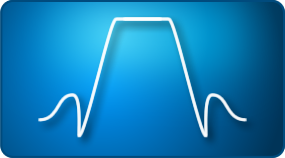
- Passes a band of frequencies
- Rejects both higher and lower frequencies
Notch FILTERS
Notch Filter Formulas
Center Frequency:
\(\begin{equation*}
F_{n} \ =\ \sqrt{F”_{-3dB} \ *\ F’_{=3dB}}
\end{equation*}\)
Low Frequency Stopband:
High Frequency Stopband:
\(\begin{equation*}
HF_{x} \ =\ LF_{x} \ +\ Stopband\ BW
\end{equation*}\)
The actual stopband frequencies may vary at frequency and bandwidth extremes.
Time Delay:
To calculate a specific time delay from the simulated data, use the frequency of interest. Referring to the, KB4, delay simulation on page 1.5, and assuming a center frequency of 420 MHz the delay is calculated as follows:
Delay = 6.5/420*106
= 15.48nSeconds at 420 MHz
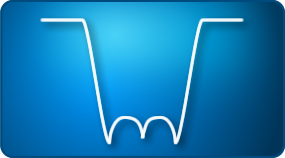
- Rejects a band of frequencies
- Passes both higher and lower frequencies
